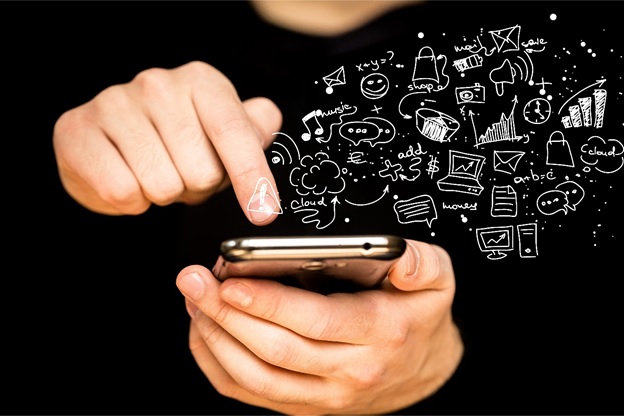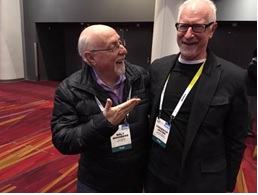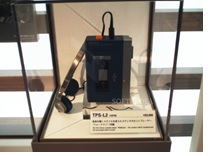
Here we are, eight years after Apple revolutionized the smartphone experience by opening their App Store, and some say the bloom is off the rose. Walt Mossberg, former Wall Street Journal tech analyst, now scribes for Recode, and he recently wrote a commentary with this headline:
“I just deleted half my iPhone apps. You should too.”
As he points out, because of his job, he has (had) an inordinate number of apps on his iPhone 6S – 305 of them to be exact. By paring those apps in half and clearing out all that space, his smartphone already operates better.
But the larger lesson from Mossberg’s analysis is that the sheer volume of available apps has created an overabundance of these little gems, leading to redundancy, lack of use, and (for him) sheer boredom.
It’s not that apps aren’t still popular and viable. Mossberg grouses that aside from an outlier like Pokemon Go, there’s very little exciting coming out of the Apple or Android app stores. And as he opines, “There are way too many bad, mediocre, or me-too apps.”

And that’s the state of the art in the app development world today. Back in 2010, if your radio station merely had an app, you were ahead of the game. Today, your app on both the iOS and Android platforms isn’t even table stakes. Your audience expects that you have an app, in much the same way you have a website or a morning show.
The question now is what value and enchantment your station’s app provides, and that’s the goal that inspires our jācapps team to continue to seek out new features, fresh ideas, strategic partnerships, and “oh wow” moments.
Unlike all those calculator, fitness, and game apps that are cluttering up everyone’s smartphone “desktop,” an app for a P1 radio station has a built-in advantage. You already have an audience that knows or respects your brand, your personalities, and your other attributes. So the key is ensuring your app provides added value, allowing your audience to take your station anywhere, set their alarm with your station’s stream, listen to your morning show’s podcasts, or watch your cool videos.
The main point of Mossberg’s commentary is that the bar has been raised on apps. What was once exciting and breakthrough has become expected and commonplace.
So take a moment, punch up your station app (in multiple settings), and take it for a test drive. Along the way, answer these questions:
1. Does the stream work properly and seamlessly?
Many factors contribute to shaky performance (location, other apps open, etc.), but in the main, is the streaming experience a positive one?
2. Is the app attractive and vibrant?
Looks matter, from your app icon to the various “pages” the consumer sees. Does your app reflect your brand? Do you need to do some app “interior decorating?”
3. Is the app fun?
Is there something interesting, different, or compelling about the app that reflects your station’s brand?
4. How’s the navigation?
Is it clear how to move around and use the various features?
5. Does advertising on the app erode or complement the overall experience?
Banner ads are traditionally obtrusive, so how does the in-app marketing look and feel?
6. Is there content where it’s supposed to be?
Does every button work, is everything updated, and is there a payoff for each feature?
7. Is it easy to connect to your social media sites?
It should be simple to connect with your station and your personalities through the app. That’s where so much social sharing is taking place.
8. Has the app been configured for the Apple CarPlay and Android Auto dashboard ecosystems?
In new cars rolling off the assembly lines as I write this post, ensuring your app will show up on the touchscreen every time the driver starts the car is essential. Otherwise, radio (and your station) loses its top-of-mind presence in the dash.
9. Are your DJs and personalities using the app as part of their shows?
Are there features like the alarm clock, push notifications, or Open Mic that could better integrate the app into your programming?
Usability testing can also answer many of these questions, and it’s not expensive or difficult to set up and administer this basic diagnostic. You can contact our Digital Dot Connector, Seth Resler, for details here.
To keep your place on your audience’s app desktops, you, your team, and your mobile app developers need to conduct regular app reviews to ensure relevance, usage, and staying power.
 No one carries around a radio anymore. Transistor radios and the Walkman are now part of museum exhibits. Radio’s portability is completely tied into the smartphone (and soon, smartwatches, smart TVs, and of course, dashboards).
No one carries around a radio anymore. Transistor radios and the Walkman are now part of museum exhibits. Radio’s portability is completely tied into the smartphone (and soon, smartwatches, smart TVs, and of course, dashboards).
Paying attention to the app user experience isn’t just a good idea.
It’s all about radio’s future.
Would your app make Walt Mossberg’s cut?
Thanks, Steve Goldstein!
- What To Do If Your Radio Station Goes Through A Midlife Crisis - April 25, 2025
- A 2020 Lesson?It Could All Be Gone In A Flash - April 24, 2025
- How AI Can Give Radio Personalities More…PERSONALITY - April 23, 2025




I like it to be fast and no turnstiles to go through. Amazing how many apps you have to look at four times before you can figure out how to use it. To me, any radio station website or app should have listen as the prominent focus point. Click and it’s done .
Bill, the less hoops the better. That said, I can tell you from the development side (and I know just enough to be dangerous) that it’s harder than it looks. Thanks for chiming in.